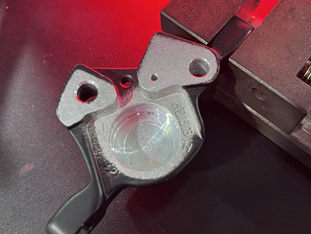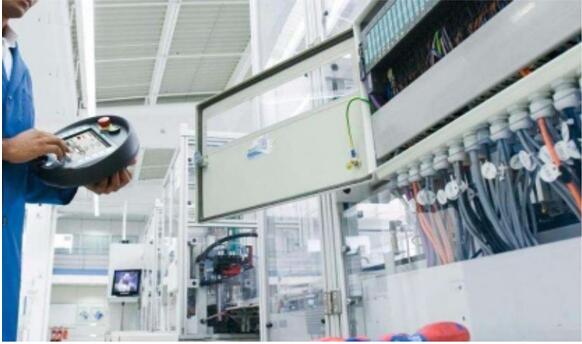Difficulty Analysis of Slot Width Measurement in Holes


The width of the slot in the hole (e.g., ring groove, rectangular groove in the hole of mechanical parts, etc.) is a common key dimension in precision manufacturing, and the difficulty of its measurement is mainly reflected in the following aspects:
1. Space constraints and contact measurement limitations: the slot in the hole is usually located inside the part, the space is narrow, the traditional contact measurement tools are difficult to reach or inconvenient to operate, forcible measurement may scratch the surface of the workpiece, affecting the accuracy; at the same time, the measurement force of the contact tool may lead to deformation of the slot (especially thin-walled parts), which further reduces the accuracy.
2. Viewing angle and imaging obstruction: the slot in the hole is easily obstructed by the surrounding structure, ordinary optical measurement (such as projector, microscope) is difficult to obtain a complete image of the slot, resulting in edge recognition difficulties; if the slot depth is large or the slot wall is tilted, the perspective distortion of the traditional optical system will also lead to measurement errors.
3. Slot complexity and accuracy requirements: in actual production, the slot shape may not be ideal rectangular (such as rounded corners, tilted edges, shaped contours), the traditional measurement methods (such as plug gauges, sample comparison) can only detect simple shapes, and can not accurately quantify the complexity of the slot shape of the width of the slot, fillet radius, and other parameters; at the same time, precision manufacturing of the slot width of the stringent requirements of the tolerances (such as ± 0.01mm), the traditional manual readings are susceptible to subjective factors, poor repeatability. The traditional manual reading is susceptible to subjective factors, poor repeatability.
4. Low efficiency of batch inspection: industrial production needs a large number of parts of the slot width in the hole for sampling or full inspection, the traditional method needs to be positioned one by one, adjust the tool, time-consuming and labor-intensive, it is difficult to meet the needs of high-efficiency quality inspection.
Image Dimension Gauge Image 3 Series: Innovative solution for slot width measurement in holes


Due to space constraints, obstructed view angles, and complex slot shapes, the Image 3 series provides an efficient and accurate solution for in-hole slot width measurement through the non-contact measurement technology of “Optical Imaging + Intelligent Algorithm”.
Non-contact measurement to avoid workpiece damage:
Image 3 series adopts non-contact optical measurement principle, through the high-resolution camera and telecentric lens (eliminating perspective distortion) to capture a clear image of the grooves in the holes, without having to touch the workpiece to complete the measurement, completely solving the problem of scratching and deformation of the contact tools, especially suitable for precision/thin-walled parts inspection.
Optical systems break through viewing angle limitations:
To address the problem of occlusion of grooves in holes, the Image 3 series is equipped with a high-precision optical system with adjustable focal length, which, combined with a ring-shaped LED light source (multi-angle illumination), clearly presents the details of the grooves. The telecentric lens ensures an image free of distortion, and even if the grooves are deeper or the groove walls are tilted, it can accurately capture the edge features, solving the blind spot of the traditional viewing angle of the optical measurements.
Intelligent algorithms cope with complex slot shapes:
Built-in advanced image processing algorithms (e.g., sub-pixel edge detection, contour fitting, feature recognition) can automatically identify the edges, rounded corners, tilted edges and other features of the groove, and accurately calculate the groove width (even if the groove shape is complex, it can also output multi-dimensional data such as the width, radius of the rounded corners, etc.); together with the high-precision calibration (with a resolution up to the micrometer level), it can satisfy the tolerance requirements of precision manufacturing (e.g., ±0.005mm).
Automated batch inspection for improved efficiency:
Supports programming control and auto-focus function, can quickly locate multiple measurement points (such as multiple slot widths of the same part or the same type of slot widths of a batch of parts), realizing “one-click measurement”; the measurement results are automatically stored, analyzed (e.g., CPK, standard deviation statistics), and the output of the report, which significantly shortens the inspection cycle and is suitable for the needs of intelligent quality inspection in the era of Industry 4.0. It is suitable for the demand of intelligent quality inspection in the era of Industry 4.0.
Slot width measurement in holes is difficult to balance accuracy and efficiency with traditional methods due to space constraints, obstructed viewing angles, and complex slot shapes. The Image 3 series of image size measuring instruments effectively solves these pain points through non-contact optical imaging, telecentric lenses, intelligent algorithms and automation technology.
Product recommendation
TECHNICAL SOLUTION
MORE+You may also be interested in the following information
FREE CONSULTING SERVICE
Let’s help you to find the right solution for your project!


 ASK POMEAS
ASK POMEAS  PRICE INQUIRY
PRICE INQUIRY  REQUEST DEMO/TEST
REQUEST DEMO/TEST  FREE TRIAL UNIT
FREE TRIAL UNIT  ACCURATE SELECTION
ACCURATE SELECTION  ADDRESS
ADDRESS Tel:+ 86-0769-2266 0867
Tel:+ 86-0769-2266 0867 Fax:+ 86-0769-2266 0867
Fax:+ 86-0769-2266 0867 E-mail:marketing@pomeas.com
E-mail:marketing@pomeas.com
